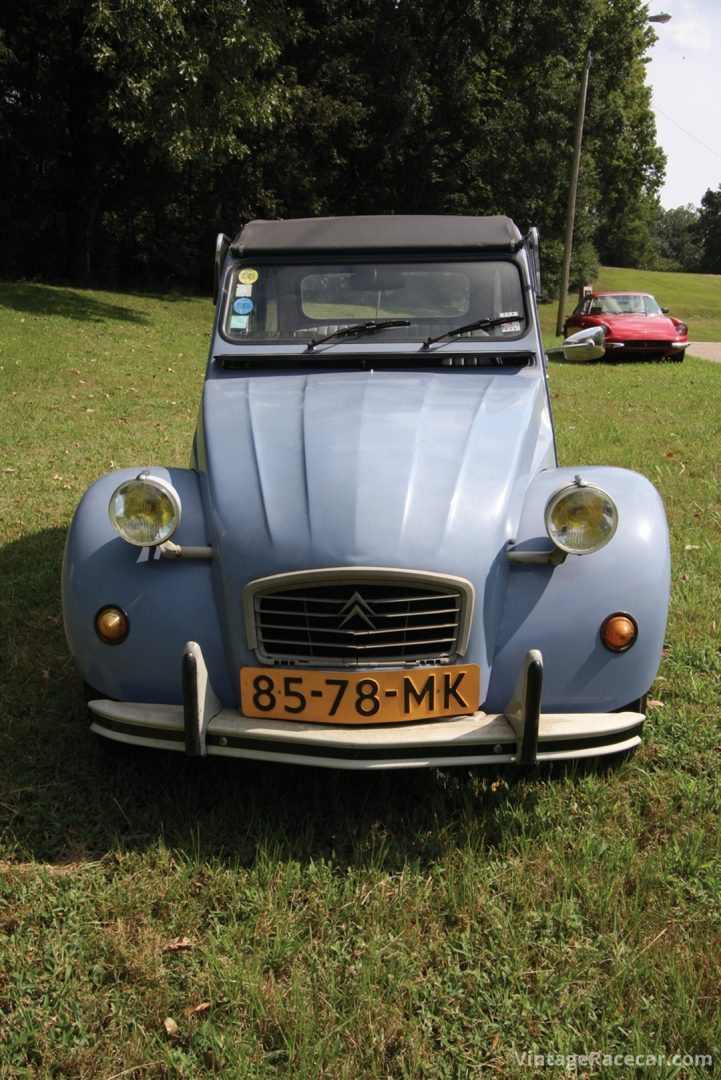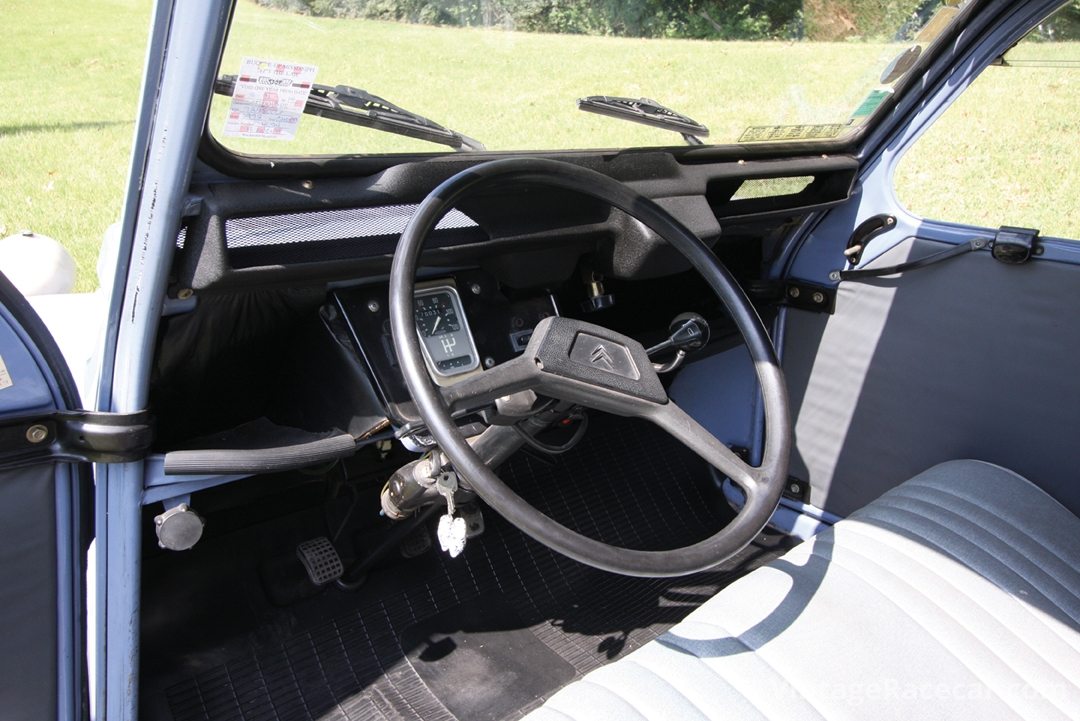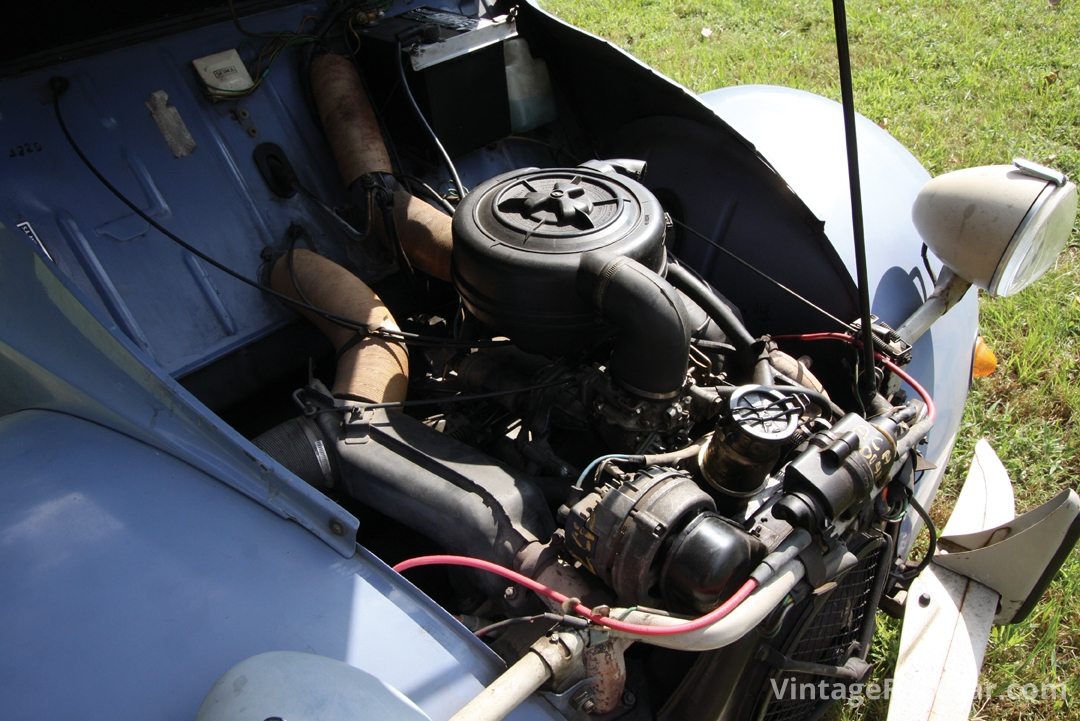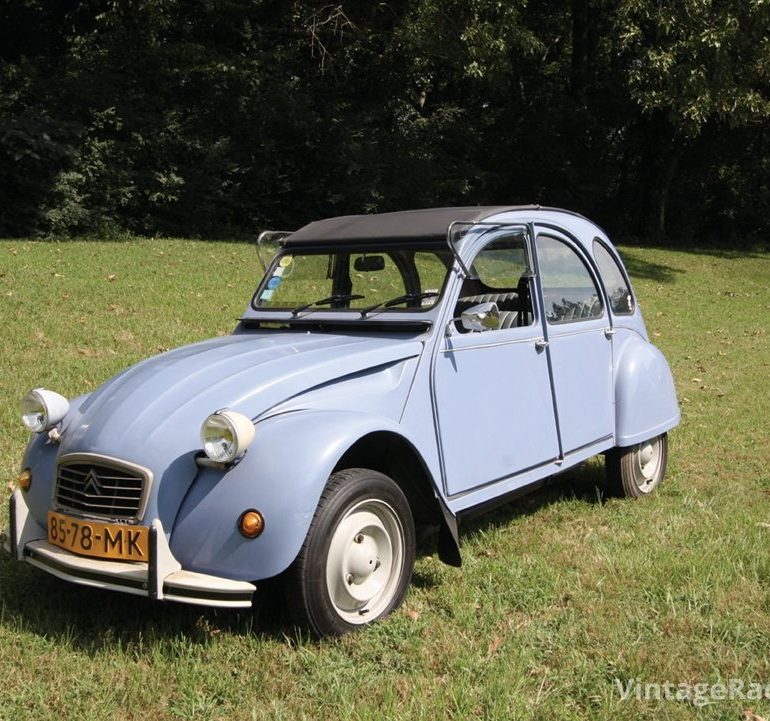In convoy with a Ferrari 365 GT 2+2, no one seemed to notice the intensely red Ferrari. Instead, fingers pointed and all heads followed the little blue Citroën 2CV, or “Duex Chevaux” as it is popularly known. This “Tout Petite Voiture,” TPV or “very small car,” came to be because of the post-WWII financial difficulties at Voisin. André Lefèbvre had an idea for a dramatically new car, but Gabriel Voisin was not in a position to build it, so he encouraged Lefèbvre to take his idea to one of the other French manufacturers. Lefèbvre first went to Renault, but they weren’t interested. Citroën was interested, and the result was the Traction Avant.
Financial troubles at Citroën resulted in the company being acquired by Michelin in 1934. Pierre Michelin commissioned a market study to determine what the auto manufacturer might do differently to regain profitability. The study noted that many in France, especially the rural poor, were not able to afford automobiles. The results of the study caused work to begin on an economy car, an “umbrella with four wheels.” There were a number of design requirements for interior space, ruggedness, economy and power, but the most often repeated requirement was that the car must be able to carry a basket of eggs across a ploughed field without breaking any of the eggs. The design team was the same one that created the Traction Avant, and Lefèbvre was its leader.

After the war, France had an even greater need for an economy car, and Citroën responded with an extensive redesign of the TPV into what became the 2CV. The car was a success as soon as it was available for sale in 1949. The waiting list was three years long, and that quickly became five years even as Citroën increased production. Success came despite the harsh comments of automotive journalists, but even they slowly came around. It was a minimalist automobile. There were few frills. The first production cars even used a pull-cord to start the engine—like a lawn mower. That quickly changed, but the 2CV was still a very basic automobile and remained that way for 42 years and 3.8 million examples.

Pat Cashman had never been in a 2CV when he bought this 1972 2CV6 in 2008, but his wife Barbara had. She had been in school, in Paris in 1974, and met and became friends with a French soldier. He had a 2CV and took her everywhere in it. She loved these cars and often mentioned them as Pat acquired other interesting automobiles. Pat noted Barbara’s comments, and began looking for a 2CV. He found an advertisement by a fellow in Maryland who sourced 2CVs and contacted him. The car that was recommended was perfect. Pat drove a 2CV for the first time when he picked it up and snuck it home on Valentine’s Day. He called the car “Celeste” partly because of its color, Celestial Blue, and partly for “Queen Celeste” in the Babar books. He gave Barbara a card that said, in French, “My name is Celeste, and I want to live with you.” Inside the car was a loaf of bread, a bottle of wine and lamb chops for their dinner.
Pat noted that the car has been very reliable over the years that they’ve owned it, and they often drive it. It remains one of Barbara’s favorite cars in their collection. She drives it regularly, and says, “It’s so ugly, it’s cute.”

This car makes you smile when you drive it, and it makes everyone who sees it smile as well. As we say in the south, “it don’t get no better’n that.”




